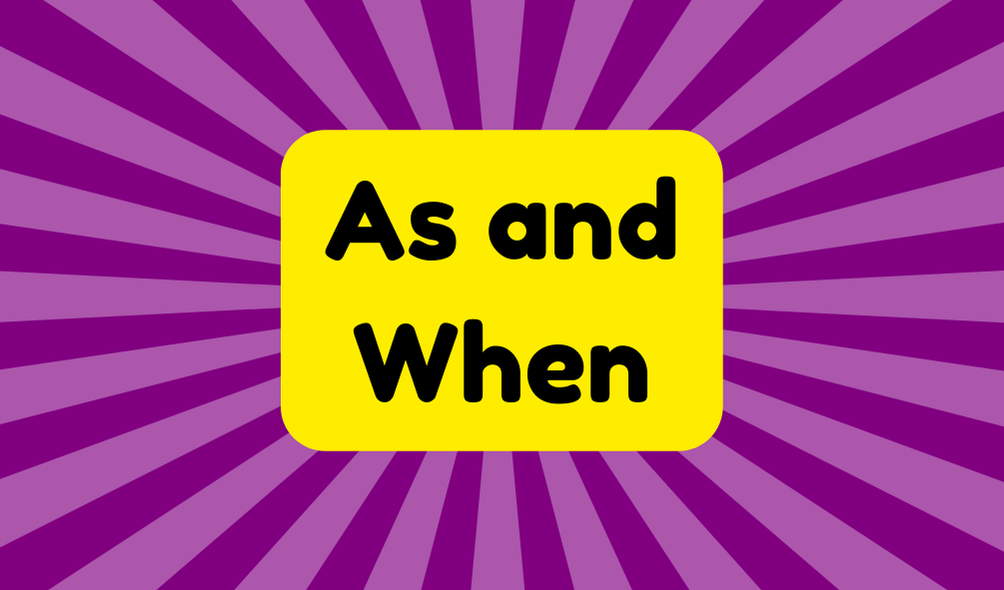The phrase "as and when" reflects flexibility and conditional timing in various contexts. Its origin traces back to Middle English, evolving from simpler concepts of time. Commonly used in sentences like, "We will update information as and when required," it highlights the adaptable nature of modern communication. This phrase remains relevant today, allowing individuals to respond dynamically to needs as they arise. Exploring its usage further reveals nuances that can refine one's understanding of everyday language.
Synonyms
Synonyms play an essential role in expanding one's understanding of phrases like "as and when." This particular phrase combines two words that have individual meanings, making it critical to examine their synonyms carefully. Recognizing alternative phrases enhances contextual usage and comprehension. Here are four notable synonyms to reflect upon:
- "As" can mean because or since.
- "When" is often used as at what time or after.
- "If" illustrates conditional scenarios, reflecting uncertainty.
- "Whenever" indicates a flexible approach to timing.
Example of Sentences
When considering the phrase "as and when," it becomes evident that its application in everyday language serves multiple purposes, often reflecting the nuanced nature of time and necessity. The practical applications of this phrase can be illustrated through various examples, highlighting common misconceptions:
- Renting equipment as and when needed, rather than owning.
- Confirming orders as and when they become ready.
- Updating information on websites as and when it's required.
- Reporting project status to superiors as and when requested.
These sentences demonstrate how "as and when" allows flexibility, yet users should recognize its conditional nature and the potential for misunderstandings.
Origin
The phrase "as and when" carries a certain intrigue in its historical usage, which has evolved considerably over time. Its origins remain obscure, yet this linguistic adaptation has been utilized in varying contexts for centuries. Initially, "when" in Middle English signified "at the time that." Through a gradual historical evolution, it transformed from "when" to "as when," culminating in the contemporary "as and when." This phrase effectively captures the conditionality and flexibility surrounding future events. Despite its common use, one must consider its ambiguity, which may leave communication open to misinterpretation in both formal and informal settings.
Collocations
While exploring the phrase "as and when," one may encounter various collocations that enhance its meaning within distinct contexts. Understanding these collocations in context helps clarify usage in different scenarios. Here are four common phrases to contemplate:
- As and when needed
- Available as and when
- Respond as and when
- Act as and when required
These collocations illustrate how "as and when" can denote flexibility and conditionality in communication. However, excessive reliance on such phrases may lead to ambiguity, suggesting a need for clearer alternatives in certain contexts, particularly when precision is essential in conveying intentions or obligations.
How to Use in Everyday Language
Understanding how to use the phrase "as and when" in everyday language can be enlightening, especially given its subtle implications. It embodies flexibility and responsiveness, making it a valuable tool in casual conversation. Individuals can employ this phrase to indicate tasks or responsibilities as circumstances arise, promoting innovative thinking and adaptive planning. For instance, stating that meetings are scheduled "as and when" reinforces an approach that embraces changes in timing while addressing immediate needs. By integrating "as and when" into dialogue, one can navigate obligations with agility, acknowledging that life's unpredictability often demands a more fluid perspective on commitments.
Why Is It Still Relevant Today?
In a world that often values immediacy and strict timelines, the phrase "as and when" continues to hold significance. This expression's cultural relevance lies in its adaptability within modern communication, appealing to those who appreciate flexibility. Notably, it allows individuals to respond to demands as they arise rather than conforming to rigid schedules.
| Advantages | Challenges |
|---|---|
| Encourages flexibility | Can lead to procrastination |
| Acknowledges uncertainty | Might create confusion |
| Promotes timely action | Risk of missed opportunities |
Ultimately, "as and when" remains an essential tool for managing the unpredictability of life.







